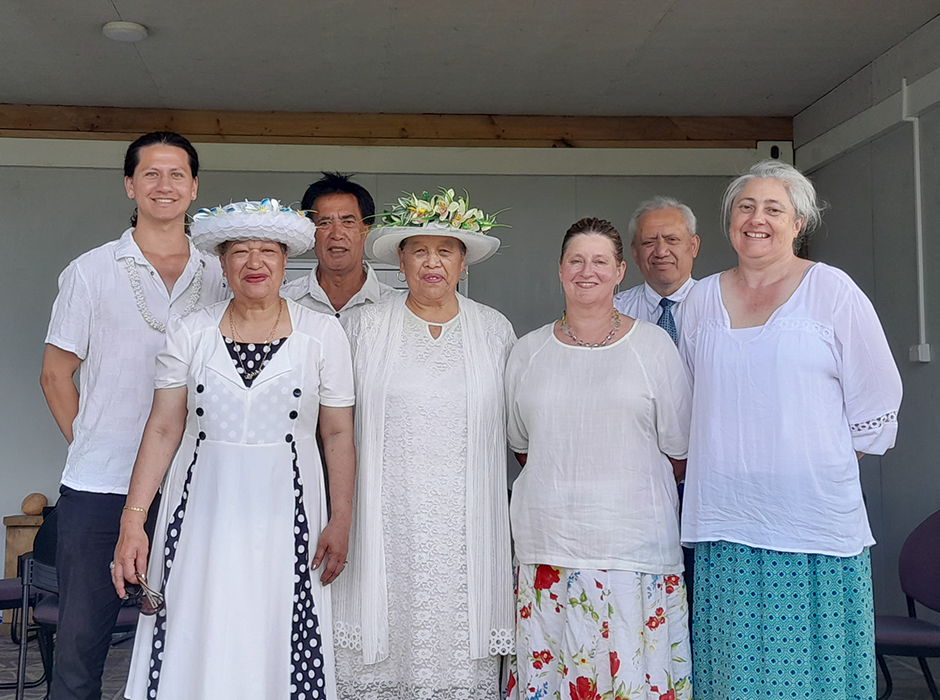
The delegation, from left to right: Cam Young, Miss Nooroa Ngatae, Papa Tami (Poe) Moeroa, Mama Keni Moeroa, Professor Hallie Buckley, Papa Timoti Timoti and Amanda Taia.
In a collaborative partnership between the University of Otago and the Mangaian community, remains excavated by Japanese researchers and given to Otago were safely brought home to Mangaia.
The Mangaian community in Dunedin recently gathered to commemorate a community-led homecoming project 40 years in the making.
Forty one boxes containing remains from 142 people made up the ‘Tava’enga Collection’, named after the district in Mangaia they were excavated from and housed in the Department of Anatomy, who acted as mana tiaki (caretakers) of these remains for decades.
The remains were excavated between 1986 and 1994 by Archaeology Professor Kazumichi Katayama and his team from Kyoto University in Japan and were given to the University of Otago in 2008 when he retired.
The repatriation project commenced in 2022 when Numangatini Ariki (King of Mangaia) and members of the Mangaian community were invited to the University to bless the remains of their tūpuna (ancestors) at a private event in the Department of Anatomy.
At this event that also outlined the repatriation project, Research and Policy Senior Analyst Amanda Taia says many approached her asking for more information afterwards, which she says reflects “their genuine interest in learning about their ancestors”.
Cook Islands medical tauira Cam Young says this was an initiative driven by the community’s wants and aspirations for their own people.
Cam was employed by the Anatomy department and entrusted by the Mangaian community to analyse the remains, enabling him to generate a report that has now been shared with the Mangaian communities in both Ōtepoti and the Cook Islands.
The report, entitled ‘E Ivi no te enua, Ka akaoki I tona oneone’ (Child of A’ua’u, Returning home), is a comprehensive information pack about the history of the collection of remains and includes details such as where the remains are from and the dates the community initially blessed the remains.
In the report, the descriptors of each set of remains are detailed, outlining their sex and age group as well as evidence of disease and physical trauma.
“The analysis I conducted in 2023 alongside Dr Charlotte King and Professor Hallie Buckley allowed me to create identity profiles of the people, which indicated who they were and what kind of life they lived,” Cam says.
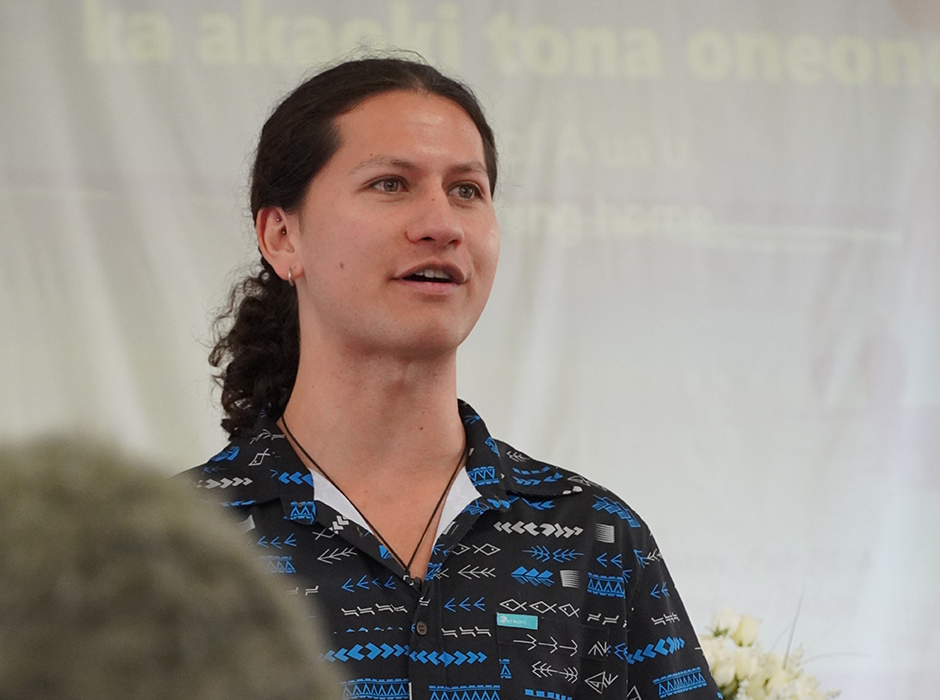
Cook Islands medical student Cam Young presented on the repatriation at an event with the Dunedin-based Mangaian community.
In February, Anatomy Professor Hallie Buckley, Amanda Taia and Cam Young from the University of Otago and Otago Mangaian community leaders Mama Keni Moeroa, Papa Timoti Timoti, Papa Tami (Poe) Moeroa and Miss Nooroa Ngatae journeyed with the remains to the Cook Islands to return them to their final resting place.
The delegation flew into Rarotonga first, where they were met by the Mangaian community living on the mainland.
“They hosted us and it was lovely to meet them and have kaikai with them,” Cam says.
“It was then that we shared our report with them. It was like our first ‘trial run’ of presenting the data, talking to them, and answering questions.”
The following day, the group flew with the remains to Oneroa, Mangaia.
“It was clear skies the whole trip until we started getting close to Mangaia, and then we flew into some dark clouds,” Cam says.
“I was honestly thinking in my head ‘is that a bad omen?’, but then as soon as we touched down, it started drizzling.
“We didn’t find out until later that Mangaia had been in a drought. There had been no rainfall for months.”
The group were met at the airport by Numangatini Ariki and more than 50 people from the Mangaian community. Together, they made their way to the same marae the remains were originally excavated from.
A group of 120 school children sang as the delegation arrived at the site, and once they received a tūrou to welcome them onto the marae, the burial process ensued.
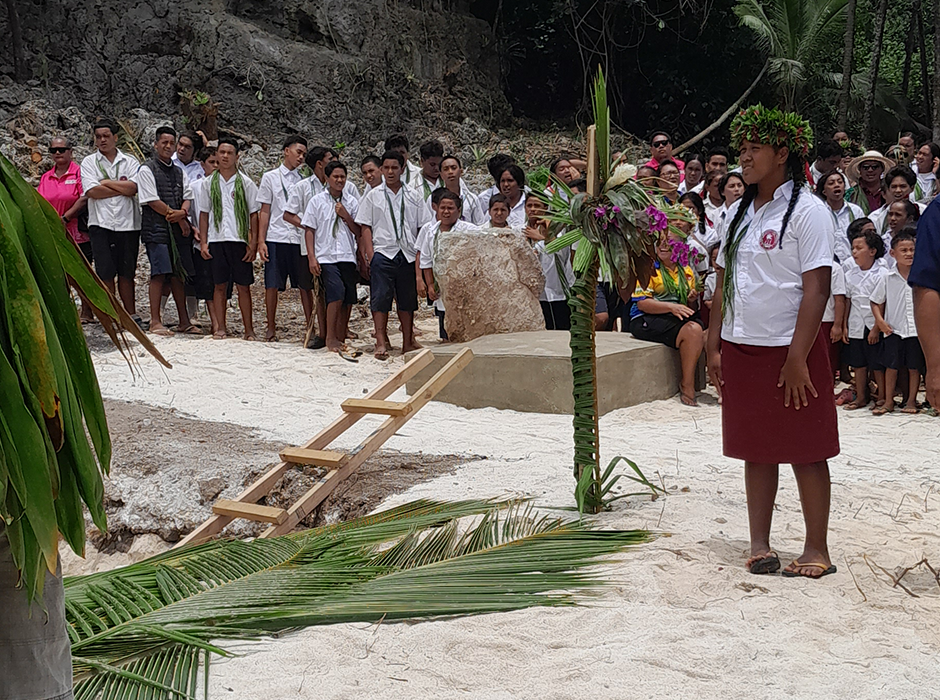
120 schoolchildren stood beside the burial site and performed a song to welcome the remains home.
Cam was chosen by Mama Keni and Numangatini Ariki to place the boxes in the new burial pit, as he had knowledge of who was in each box.
Mama Keni says she was “so touched” to have Cam involved in the burial process.
“He knew who the males, females and children were, and was able to arrange the boxes in a particular way so that the tamariki were buried in the middle of the adults, surrounded,” she says.
Church leaders held a service at the site and then attendees congregated at the King’s palace to share a meal and discuss the report.
Following the presentation, Numangatini Ariki encouraged the University to create more direct capacity-building pathways and opportunities for Mangaian people in the future.
The group had further engagements with the Mangaian community over the week they were there, including presenting at the Ivirua church and at the palace once again.
Taia says the group had the opportunity to speak to locals who remembered the original excavation group from Japan.
“They could remember the names of the team that were originally working here, in a lot more detail than we could actually get from the information the remains came with,” she says.
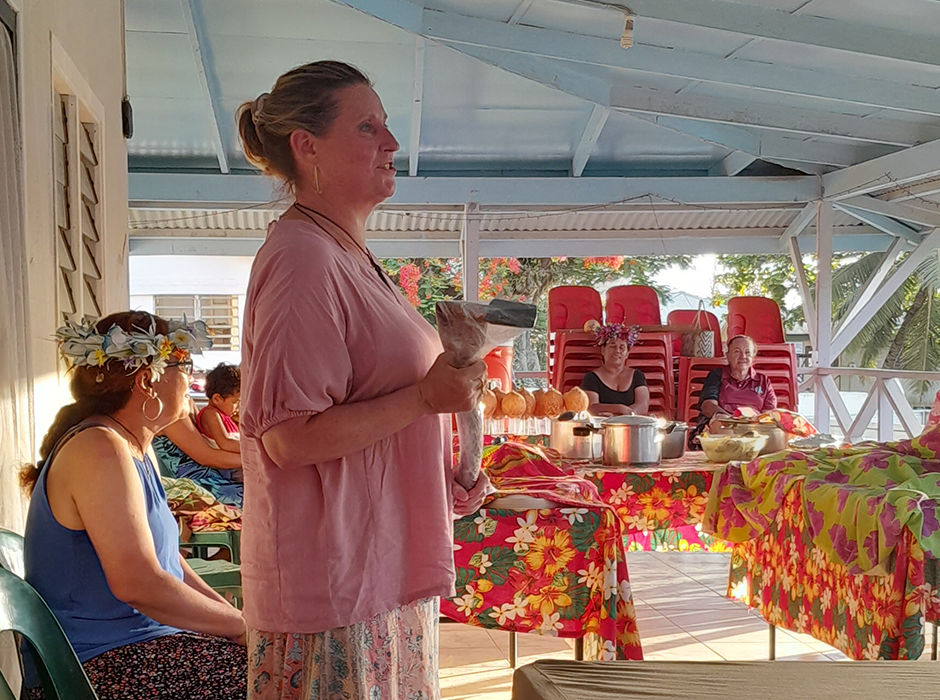
Anatomy Professor Hallie Buckley speaking at the palace in Mangaia.
The local Mangaian community gathered at North Dunedin Pacific Island Church last month to hear about the journey to Mangaia. Mama Keni says reporting back to the Mangaian community in Ōtepoti was an important part of concluding the repatriation process.
“We are so grateful for the support we have received for our tūpuna to be back to where they belong. This is a big thing to us. For me as a leader of the Mangaian community, this was a big event in my life.”
Dr Charlotte King says this has been both an emotional and an intense experience.
“A lot of work timewise, but also a lot of thinking about how many people were removed from the Cook Islands and Mangaia and how many lives have been affected by the work that has happened in the past and is happening now,” she says.
The University has been invited to attend the unveiling of the repatriated remains, scheduled for June, which aligns with the 200th anniversary of the gospel arriving in Mangaia, which will see thousands travel to the Island for celebrations.
Taia says the University “couldn’t have done what we did without Mama Keni and the community’s support”, and she looks forward to future opportunities to collaborate with the Mangaian community.
“We don’t want to do something big and then walk away. The important part about relationship-building is the maintenance of that relationship over time.”
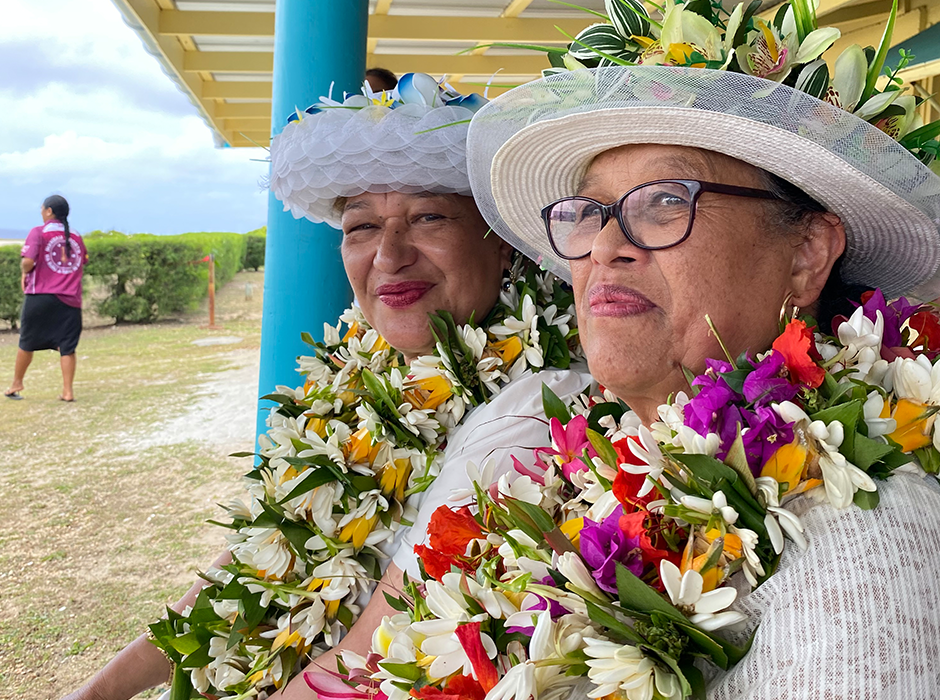
Miss Nooroa Ngatae (pictured left) says “it was very emotional and so good to return our ancestors back home”.
Numangatini Ariki acknowledged the work of the delegation to repatriate these remains.
"The call was responded to with this repatriation project to return bones back to their 'enua, to their homeland, to their place of belonging, to their place of rest.”
~ Kōrero by Keilah Fox, Adviser Communications (Pacific)